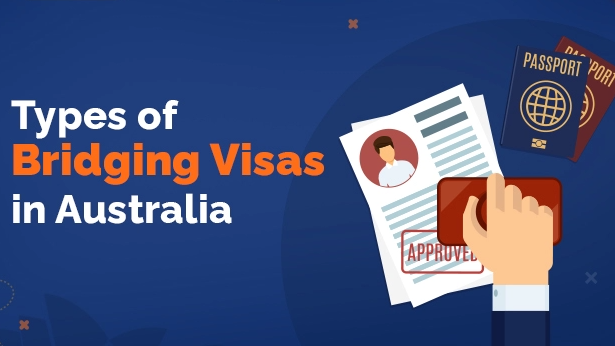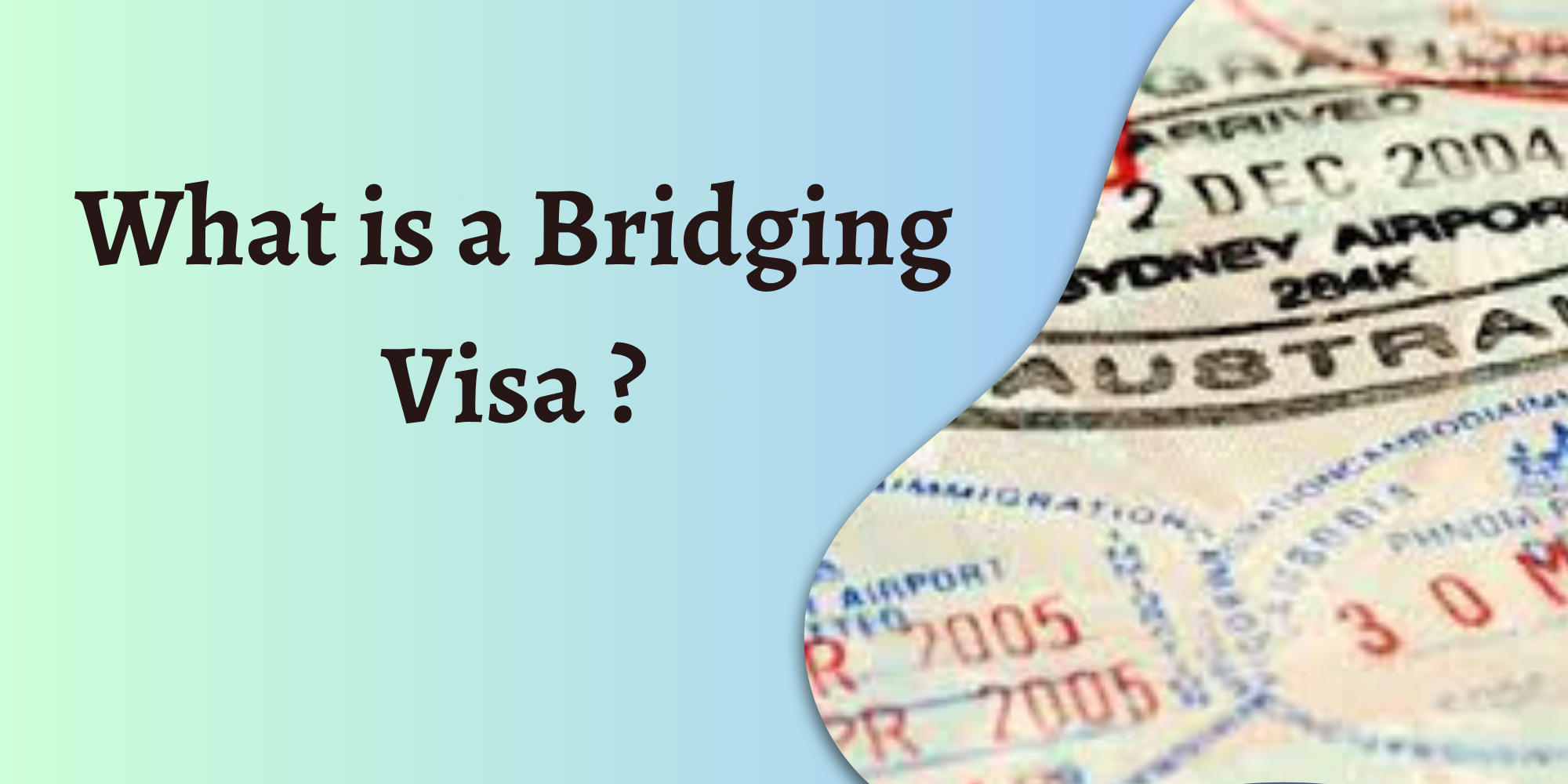What happens if you’re current visa is about to expire and you haven’t received a response regarding your new application? Even worse, what should you do if your current visa has already expired? Well, you can still stay legally by applying for a bridging visa.
A bridging visa is a temporary visa that allows you to stay legally in Australia. It gives you time to either apply for a new visa or make arrangements for your departure from Australia.
In this guide, you’ll learn more about the types of bridging visas, their eligibility requirements, conditions, and more.
Table of Contents
- Visa Overview
- Processing Times
- What is a bridging visa in Australia?
- Who needs a bridging visa?
- Understanding the different bridging visa types
- Is Bridging Visa a temporary visa?
- Can I apply for another visa while on Bridging Visa A?
- What is the difference between Bridging Visas A and C?
- Enjoy a smoother bridging visa application with the support of a registered agent.
What is a bridging visa in Australia?
A bridging visa is a special type of visa designed to ‘bridge’ the gap between the expiration of your current visa and the decision on your new visa application. It allows non-Australian citizens to remain in the country lawfully during this waiting period.
Generally, you can only apply for a bridging visa if you hold or previously held a substantive visa.
Substantive visas are types of visas that allow for long-term stays or permanent residency. This includes work, student, and family visas such as:
- Skilled Regional Visa – 887 visa
- Temporary Graduate Visa – 485 visa
- Sponsored Parent (Temporary) Visa – 870 visa
On the other hand, non-substantive visas are temporary and short-term, including bridging visas, enforcement visas, and criminal justice visas.
Who needs a bridging visa?
You will need a bridging visa if you are in one of these immigration situations:
You’re in Australia on a temporary visa, but it has expired, and you’re waiting for a decision on your new visa application.
Sample scenario: You’ve been studying in Australia on a student visa that has expired. You’ve applied for a skilled worker visa to continue your career in the country.
While waiting for the decision on your skilled worker visa application, you apply for a bridging visa. This maintains your legal status and allows you to pursue the job opportunity once your application is approved.
You’ve applied for a substantive visa, but it’s still being processed, and you need to stay in Australia briefly.
Sample scenario: You’ve submitted an application to extend your student visa so you can continue to study in Australia. However, the processing of your extension is taking longer than expected.
To ensure you can legally remain in Australia to finish your studies, you apply for a bridging visa. Then, you simply wait for the extension outcome.

Your substantive visa application has been denied, but you have appealed the decision and you need to stay in Australia while your appeal is being processed
Sample scenario: Your partner visa application has been denied. You have appealed the decision, and you need to stay with your family in Australia while the appeal is in process.
To remain in the country legally, you apply for a bridging visa during the appeal.
You have been granted a substantive visa, but you need to stay in Australia briefly before you can travel on that new visa.
Sample scenario: You hold a temporary work visa in Australia and have just been granted a skilled worker visa.
However, before the activation of your new skilled worker visa, there’s a brief waiting period, typically a few weeks to a couple of months. During this time, you need to stay in Australia to complete specific job assignments.
To be able to remain lawfully in Australia during this time, you apply for a bridging visa.
You have been granted a substantive visa, but you need to leave and return to Australia briefly before settling there permanently.
Sample scenario: You’ve been granted a parent visa to join your family in Australia permanently.
However, there is an urgent need for you to briefly return to your home country for personal reasons before you can settle in Australia permanently.
To ensure your ability to return and maintain your visa status during this short absence, you secure a bridging visa.
Understanding the different bridging visa types
A bridging visa can help you maintain lawful status in Australia during these transitional periods, but they may come with limitations on certain activities. Below are the types of bridging visas in Australia.

Bridging Visa A (BVA)
Visa Overview
Bridging Visa A (Subclass 010) allows you to stay in Australia after your current substantive visa expires, and while your new visa is being processed.
Once your BVA is in effect, you must stay in Australia. Travelling overseas will end your BVA.
Benefits
- Stay in Australia lawfully while you wait for your new substantive visa to be approved
- Work in Australia (subject to visa conditions)
Work rights
Typically, the BVA allows you to engage in work in Australia.
However, keep in mind that certain BVA grants might not permit work. In such cases, you should apply for a new BVA that allows work, although this can only be made if you can demonstrate financial hardships.
Eligibility Requirements
- You must be in Australia when applying for BVA.
- Your current substantive visa should be expiring or expired.
- You must have applied for a new substantive visa.
Conditions
- Your BVA starts the moment it’s granted and your current substantive visa has expired.
- Your BVA ends if:
- You leave Australia during its validity
- You are granted the new substantive visa
- Another bridging visa linked to the same substantive visa application as this BVA is granted
- If you hold a substantive visa upon BVA grant, you must continue to comply with the conditions of the substantive visa. When your substantive visa ends, the conditions of your BVA will apply.
- You might need to submit a different application for a BVA if:
- Your initial substantive visa application didn’t include a BVA application.
- You were granted a BVA or a Bridging Visa B (BVB), but it’s no longer valid, and you meet the conditions for a new BVA.
- You’re pursuing a BVA without work limitations.
- You’ve applied for a judicial review.
- The Department of Home Affairs (DoHA) cancels either your BVA or the substantive visa linked to your BVA.
- You can’t stay in Australia longer by extending this visa.
Processing Times
The 010 visa is usually granted automatically upon applying for a substantive visa.
Visa Fee
Free
How do I apply for bridging visa A?
Bridging Visa A is usually granted automatically when you apply for a substantive visa.
However, if a separate application is needed due to one or more of the reasons stated in the conditions, you must apply through your ImmiAccount.
Bridging Visa B (BVB)
Visa Overview
The Bridging Visa B (Subclass 020) allows you to stay in Australia legally while your substantive visa is being processed. It also permits you to leave and return to Australia for a defined travel period (within 3 to 12 months)
Basically, it is similar to a BVA, but with the benefit of being able to depart and come back to Australia.
Benefits
- Stay in Australia lawfully while you wait for your new substantive visa to be approved
- Leave and return to Australia for a set period of time
- Work in Australia (subject to visa conditions)
Work rights
With a BVB, you can work in Australia given that your previous substantive visa or the visa you applied for allows it.
Otherwise, you will not be able to work with a BVB.
To get approval for work, consider applying for a BVA, where you’ll need to demonstrate that you are in financial hardships.
Eligibility Requirements
- You must be in Australia when applying for BVB
- Your current substantive visa should be expiring or expired.
- You must have applied for a new substantive visa.
Conditions
- Your BVB starts the moment it’s granted and your current substantive visa has expired.
- Your BVB ends if:
- You are granted the new substantive visa.
- Your substantive visa is denied.
- Your BVB or substantive visa is cancelled by DoHA.
- You must have substantial reasons for wanting to travel
- You can’t stay in Australia longer by extending this visa.
Processing Times
The 020 visa processing time varies depending on individual circumstances. To avoid delays in your application, make sure to complete your application thoroughly and promptly respond to any information requests from DoHA.
Visa Fee
AUD 180
How to apply for bridging visa B?
You must apply for the bridging visa B through your ImmiAccount.
Bridging Visa C (BVC)
Visa Overview
The Bridging Visa C (Subclass 030) is typically granted to people who are in Australia unlawfully, and who are either currently making arrangements to depart the country or waiting for a decision on a substantive visa application.
The BVC allows them to stay in Australia legally and temporarily.
Benefits
- Stay in Australia lawfully while you’re waiting for your new substantive visa to be approved or making arrangements to depart Australia
- Work in Australia (if eligible)
Work rights
Typically, a BVC doesn’t allow you to work, unless you’ve applied for specific SkillSelect visas:
- Business Talent visa (subclass 132)
- Business Innovation and Investment (Provisional) visa (subclass 188)
- Business Innovation and Investment (Permanent) visa (subclass 888)
- Employer Nomination Scheme visa (subclass 186)
- Regional Sponsored Migration Scheme visa (subclass 187)
- Skilled — Independent visa (subclass 189)
- Skilled — Nominated visa (subclass 190)
- Skilled — Regional (Provisional) visa (subclass 489).
You may apply for another BVC that lets you work. However, you will be required to provide proof that you are experiencing financial hardship.
Eligibility Requirements
- You must be in Australia when applying for BVC
- You must not have held a substantive visa when you lodged your application for a substantive visa.
- You must have applied for a substantive visa.
- You must not hold a Bridging Visa E (BVE), and must not have held a BVE since you last held a substantive visa
Conditions
- Your BVC starts the moment it’s granted and your current substantive visa has expired.
- Your BVC ends if:
- You leave Australia while your BVC is in effect
- You are granted the new substantive visa.
- Your BVC or substantive visa is cancelled by DoHA.
- As a BVC holder, you are not eligible for BVB while your substantive visa application is being processed.
- If you hold a substantive visa upon BVC grant, you must continue to comply with the conditions of the substantive visa. When your substantive visa ends, the conditions of your BVC will apply.
- You can’t stay in Australia longer by extending this visa.
Processing Times
The 030 visa processing time varies depending on individual circumstances. To avoid delays in your application, make sure to complete your application thoroughly and promptly respond to any information requests from DoHA.
Visa Fee
Free
How to apply for bridging visa C?
You must apply for the bridging visa C through your ImmiAccount.
Bridging Visa D (BVD)
Visa Overview
The Bridging Visa D (Subclass 040 and 041) is a bridging visa that allows you to stay lawfully in Australia for a short period (typically 5 working days).
This gives you time to either lodge an application for a substantive visa, arrange your departure from Australia, or apply for another bridging visa.
The difference between the two subclasses lies in the eligibility requirements.
Benefits
- Stay in Australia lawfully while you lodge a new substantive visa application or arrange your departure from Australia.
Work rights
A BVD strictly prohibits you from working in Australia. If you violate this rule, your BVD is highly likely to be cancelled.
Eligibility Requirements
For Subclass 040:
- You must be in Australia when applying for BVD
- You must not hold a substantive visa or the substantive visa you hold should expire within three working days.
- You attempted but were unsuccessful in applying for a substantive visa – for example, you couldn’t pay the correct fee or you completed the wrong application form.
However, you’ll be able to reapply within the next 5 working days, making you potentially eligible for a BVC by then.
For Subclass 041:
- You must be in Australia when applying for BVD.
- You must not hold a substantive visa.
- You are either do not want or unable to apply for a substantive visa.
- An authorised immigration officer is not available to interview you.
Conditions
- Your BVD ends:
- Five working days after the grant or five days after the expiration of your substantive visa, or
- If you are granted a BVE within those 5 days
- You cannot travel outside Australia on this visa.
Processing Times
The 040 visa processing time varies depending on individual circumstances. To avoid delays in your application, make sure to complete your application thoroughly and promptly respond to any information requests from DoHA.
Visa Fee
Free
How to apply for bridging visa D?
Generally, when you submit an invalid substantive visa application in Australia, you will also be automatically considered for a BVD.
There may be situations where a separate application is necessary. In such cases, you must:
- Complete Form 1007 Application for a Bridging Visa D
- Send the form, along with the necessary supporting documents, by post to the nearest Australian Visa and Citizenship office.
Bridging Visa E (BVE)
Visa Overview
The Bridging Visa E is divided into two subclasses:
- Subclass 050
This visa lets you stay lawfully in Australia when you need more time to make arrangements for your departure, settle any immigration matters, or wait for a decision on your immigration status.
- Subclass 051
This visa allows you to stay in Australia while your Protection visa application is being reviewed.
Benefits
- Stay in Australia lawfully
- Work in Australia (subject to conditions)
Work rights
Typically, a BVE does not allow you to work.
You may be able to apply for a new BVE that lets you work. However, you will be required to provide proof that you are experiencing financial hardship.
Eligibility Requirements
For the Subclass 050:
- You must be an unlawful non-citizen or hold a BVE (subclass 050) or hold a BVD (subclass 041). One of the following situations should apply to you:
- You’re making arrangements to leave Australia
- You’re applying for a substantive visa
- You’re applying for merits or a judicial review
- You, as well as your other family members, must meet character requirements.
For the Subclass 051:
- You must have been denied immigration clearance or evaded immigration clearance, and come to our attention within 45 days.
- You must have applied for a protection visa.
- You must be in immigration detention.
- You must meet health and character requirements.
Conditions
- Your BVE starts the moment it’s granted.
- Your BVE ends if:
- You leave Australia
- You are granted the new substantive visa.
- Your BVE is cancelled by DoHA.
- You can’t stay in Australia longer by extending this visa.
Processing Times
The processing time for BVE varies depending on individual circumstances. To avoid delays in your application, make sure to complete your application thoroughly and promptly respond to any information requests from DoHA.
Visa Fee
Free
How to apply for bridging visa E?
You can apply for the BVE through your online ImmiAccount.
You may also opt for a paper application:
- Complete Form 1008 Application for Bridging Visa E – subclass 050
- Send your application by post to the nearest Australian Visa and Citizenship office.
Bridging Visa F (BVF)
Visa Overview
The Bridging Visa F (subclass 060) is granted exclusively to suspected victims of human trafficking, slavery, and similar forms of abuse.
Benefits
- Stay in Australia for up to 30 days
- Include family members in the application
- Receive care and support for the duration of your stay
Work rights
Typically, a BVF does not allow you to work.
Eligibility Requirements
To be eligible for this visa, you must have been identified by DoHA as a suspected victim of human trafficking, slavery, and similar forms of abuse.
Conditions
- You cannot leave Australia without permission from DoHA.
- You are required to comply with reporting requirements, which may include:
- Reporting to DoHA when required
- Notifying DoHA promptly regarding any changes to your address
- You must comply with any other conditions or requirements attached to your BVF.
Processing Times
The processing time for BVF applications varies depending on individual circumstances.
Visa Fee
Free
How to apply for bridging visa F?
You cannot apply for a BVF directly. You must be invited to apply by the Minister for Immigration, Citizenship and Multicultural Affairs.
Following this, they will assist you on how to proceed, including forms you have to complete, as well as the arrangements for your stay in Australia.
Bridging Visa R (BVR)
Visa Overview
The Bridging Visa R (subclass 070) is granted to those in immigration detention who are facing pending removal from Australia by the Australian Government. It acts as a temporary release from detention when their removal from Australia is not currently possible.
Benefits
- Stay in Australia until your removal from Australia is reasonably practicable.
Work rights
Typically, a BVR does not allow for work.
Eligibility Requirements
To be eligible for this visa, you must be in immigration detention and facing pending removal from Australia by the Australian Government.
Conditions
- You must cooperate as much as you can with DoHA to expedite your removal from Australia.
- Your BVR ends immediately once your removal is reasonably practicable. You will receive this notification in writing from the Minister.
- You are required to comply with reporting requirements, which may include:
- Reporting to DoHA when required
- Informing DoHA of your residential address
- Notifying DoHA promptly regarding any changes to your address
- You must comply with any other conditions or requirements attached to your BVR.
Processing Times
The processing time for BVR applications varies depending on individual circumstances.
Visa Fee
Free
How to apply for a bridging visa R?
You cannot apply for a BVR directly. If you qualify for the BVR, you will be invited to apply by the Minister for Immigration, Citizenship and Multicultural Affairs.
Following this, they will guide you on how to proceed.
Is Bridging Visa a temporary visa?
Yes, bridging visas are temporary visas. Their main purpose is to allow you to stay in Australia for a limited period, giving you time to either apply for a substantive visa, arrange your departure from Australia, or wait for a decision on another visa application.
Can I apply for another visa while on Bridging Visa A?
Yes, you can apply for another visa while on a Bridging Visa A (BVA). However, there are a few things you need to keep in mind.
- You can only apply for a substantive visa, not another bridging visa.
- You must meet all of the eligibility requirements for the visa you are applying for.
- You must apply for the visa before your current BVA expires.
What is the difference between Bridging Visas A and C?
The main difference between Bridging Visas A and C lies in the applicant’s current immigration status in Australia.
A BVA is granted to people who are already in Australia on a substantive visa and have applied for another substantive visa before their current visa expires.
On the other hand, A BVC is for people who are in Australia unlawfully and who are making arrangements to depart from Australia, or who are waiting for a decision on a substantive visa application.
Enjoy a smoother bridging visa application with the support of a registered agent.
Save yourself the stress of handling the numerous requirements for a bridging visa application…
At KBA Global, we’ve helped countless people achieve their dreams of studying, working, and living in Australia. We keep up with all the latest immigration changes to make sure your bridging visa application is complete and on time.
Make your stay in Australia lawful and enjoyable! Book a call and let us know how we can help you.
| Disclaimer: The above information is a general guide and not professional immigration advice. Be aware that immigration laws and regulations can change swiftly, potentially rendering some or all of the information outdated. Thus, before using the information above, we recommend checking the current laws with assistance from a migration agent or the Department of Home Affairs website. |

